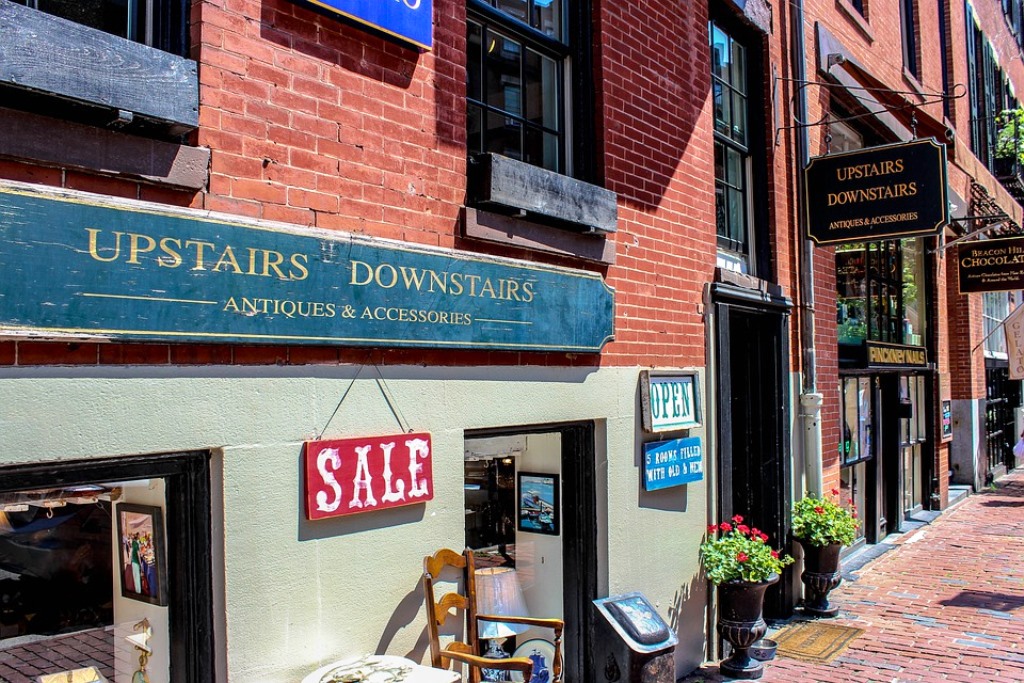“Nothing happens until you sell something.”
Whether you are an antiques or collectibles dealer or some other form of reseller, the quote above, attributed to everyone from Mary Kay Ash to Peter Drucker, should strike a chord with you. It attests to how vital marketing is for your business. That said, are you a business owner who gives only an afterthought to your marketing? If that is the case, you are sacking your profitability!
Marketing is crucial for any business, and antiques dealers and resellers are no exception. However, if you want to build your business, the best place to begin is by examining—and bolstering—your marketing efforts. This article is the first in a series intended to teach you about the key components of marketing and how to integrate them into your business. This first piece will briefly introduce you to what will follow in nine subsequent information-packed articles.
Marketing Versus Advertising —What’s the Difference?
Hopefully, you grasp the importance of marketing. But you may see the process through too narrow of a lens. I’ve taught marketing professionally for nearly thirty years and discovered that better than 80-percent of my students have a distorted view of marketing. So at the outset of each class, I ask an important question: “What is the difference between marketing and advertising? Are they the same?” Unfortunately, more often than not, students believe “marketing” and “advertising” are functional synonyms.
While activities like advertising, sales, and online promotion are vital to attracting customers, marketing involves more than just promotion. While advertising gets your message in front of eyeballs, marketing is just as concerned with who should get that message, what might attract them, and what it takes to keep buyers coming back.
Marketing is like a jigsaw puzzle involving several interconnected pieces of your business. Promotion (advertising and sales) is just one of the pieces. The group of puzzle pieces in marketing circles is known as the “marketing mix.”
The Marketing Mix
When applied together, nine items create a powerful marketing approach. The marketing mix is known by its nickname “the Ps and Cs of marketing” because it alludes to the first letter of each of the nine items under consideration. There are four Cs, each dealing with essential marketplace concerns for your business. The five Ps are more tactical and refer to specific areas to enhance your marketing efforts. Here is a quick overview of each item:
Company
The “C” of company deals with the importance of having some type of specialization for your business. To grow, you must get beyond a simplistic view of merely buying low and selling high. Having a specialty makes you known for something and attracts potential customers to you.
Customer
This portion of the marketing mix gets you to consider who your buyers are. The goal is to identify the characteristics of your most likely customers. This includes determining where they are located, what personal traits may be important, and why they will buy from you.
Competition
While resellers and antiques dealers may not face the same competitive pressures big-box retailers do, it’s still important to understand the competitive landscape. Discovering those who sell similar merchandise in your area is significant. You can glean a lot from how competitors handle their businesses. Competitive research can even unearth opportunities in the marketplace, including ways to collaborate with your peers.
Channel
This category examines two business processes. This first involves researching and developing your supply sources—where (and how) you get merchandise to resell. The other considers how you get merchandise into your customers’ hands, which could involve anything from running a store to selling online.
Product
The first “P” involves the obvious—the type of merchandise you sell. Then, tying in with the “C” of company, you want to develop some form of specialization for your business. And being familiar with competitors’ offerings helps you determine how your merchandise fits into the marketplace. It is all about making your offerings stand out, whether offering different merchandise, better prices, or making items more readily or conveniently available.
Price
Pricing is a complex issue, and it is vital to have a strategy. While low prices can spur quick sales, low pricing isn’t always the best approach. Sometimes, with commensurate quality, higher-end “prestige” pricing is a better option. Or maybe it’s about fitting somewhere in-between. An important consideration is where your prices fit within the competitive spectrum.
Promotion
Promotion is the most recognized piece in the marketing puzzle. This “P” considers all the various ways you can advertise, sell, or otherwise publicize your merchandise, activities, and business. One of the biggest promotional concerns is determining which methods have the greatest likelihood of reaching your intended customers.
Packaging
Packaging can refer either to how you package your merchandise or how you dress your entire business. For merchandise, well-considered packaging can add interest and desirability. But there is also the practical aspect of protection against damage. For a whole company, it’s about creating a vibe. In either case, while packaging can create allure, there are added costs to consider.
Place/Placement
This “P” takes two forms. First, Place refers to your business location and how foot and auto traffic, convenience, and a location’s desirability help draw buyers. Placement refers to where items are located within a location. Placement is concerned with things like visibility, shelf location, and providing stimulus for impulse buying.
You’ve been reminded that nothing happens unless you sell something. That’s important enough that I will refer to it as marketing mantra #1 in our series. Yet, a lot more goes into selling than handing out business cards, participating in a show, or posting items on eBay. Marketing is about an array of touchpoints in your business. So join me next time as we look at how addressing the C of Company can dramatically enhance your business.
William Flood is a mid-century antiques dealer and writer specializing in twentieth-century commercial culture. He writes for numerous antique and collectibles publications on subjects like roadside architecture, 1950s modernism, and even vintage tiki culture. He is the author of two Ohio local history guides. When not writing, you might find him enjoying a small-town Main Street or taking the great American road trip.
WorthPoint—Discover. Value. Preserve.
The post Marketing Makeover for Dealers and Resellers: Part I, Laying the Foundation appeared first on WorthPoint.



